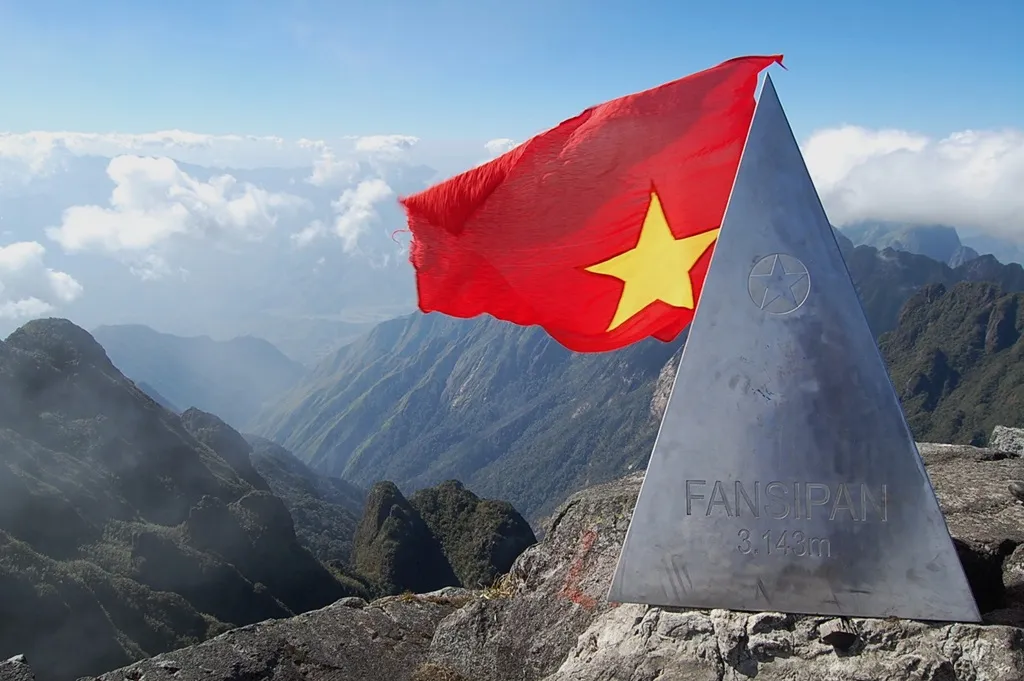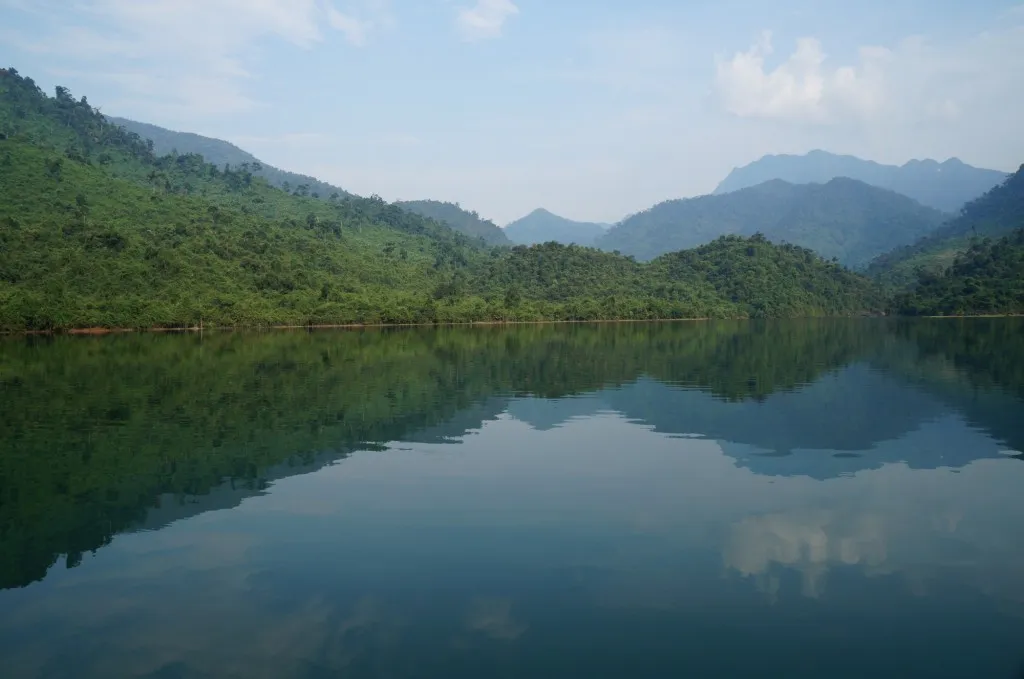Vietnam, the beloved S-shaped strip of land, is not only famous for its long coastlines and lush green rice fields but also known for its majestic and towering mountains, which hold countless wonders. From Fansipan Peak, the “Roof of Indochina,” to the sacred Chua Chan Mountain, each mountain possesses a unique beauty and a distinct story, beckoning nature lovers and adventurers to explore.
1. Fansipan Peak (Lao Cai): The Proud “Roof of Indochina”
When mentioning the most majestic mountains in Vietnam, Fansipan, the highest peak in Indochina at 3,143m, is a must-mention. Located in the Hoang Lien Son range in Lao Cai province, Fansipan has long been a symbol of the spirit of conquest and national pride.

To conquer Fansipan Peak, visitors can choose from various routes, each offering unique experiences. The route through Cat Cat village is popular, with a 4-day, 3-night journey that allows travelers to explore the pristine beauty of the mountains and forests. Along the way, you will admire rare native plants, dense primeval forests, and especially the floating sea of clouds above 2000m. As you approach the summit, the temperature drops, and fog covers the area, creating a mystical scene. Upon reaching the top, you will feel a sense of pride in setting foot on the “Roof of Indochina,” admiring the panoramic view of the majestic mountains.
2. Hong Linh Mountain (Ha Tinh): A Witness to History
Hong Linh Mountain, a range with 99 peaks in Ha Tinh province, is not only a scenic spot but also a historical witness. The folk song “Hong Linh, peaks caressed by clouds…” evokes memories of convoys crossing the Truong Son range to the South for battle.

Today, Hong Linh Mountain still stands majestically with its pristine and imposing beauty. It also preserves many historical relics and famous landmarks. On the mountain, there are hundreds of pagodas, temples, and shrines, among which the most famous are Huong Tich Pagoda, Chan Tien Pagoda, and Thien Tuong Pagoda, associated with fascinating legends and myths. Together with the Lam River, Hong Linh Mountain is considered a symbol of Ha Tinh province, a source of pride for the local people.
3. Bach Ma Mountain (Thua Thien – Hue): A Temperate Climate Zone in Central Vietnam
Bach Ma Mountain, located 50km south of Hue city, is an ideal destination for those seeking a green and peaceful space. With an altitude of over 1,500m, Bach Ma Mountain has a cool climate year-round, likened to a “Da Lat” or “Sapa” of Central Vietnam.

At the summit, visitors will admire majestic waterfalls, clear streams, and diverse and rare flora and fauna. Trails like Tri Sao, Do Quyen, Ngu Ho, and Hai Vong Dai will lead you to explore stunning landscapes and remaining historical relics. Especially in spring, azalea flowers bloom, creating a romantic and poetic scene.
4. Langbiang Mountain (Lam Dong): Where Immortal Love Resides
Langbiang Mountain, also known as Lam Vien Mountain, located 12km north of Da Lat city, is a must-visit destination when coming to the land of thousands of flowers. With an altitude of 2,163m, Langbiang is not only a beautiful mountain but also associated with the romantic yet tragic love story of Lang and Biang.

Langbiang Peak is an ideal place to admire the panoramic view of the dreamy Da Lat city and surrounding areas. Visitors can participate in activities such as mountain climbing, hiking, paragliding, or exploring the diverse ecosystem of the mountains and forests. From the mountaintop, you will admire the winding Dankia stream, and small, charming houses nestled among the mountains and trees, creating a picturesque landscape.
5. Chua Chan Mountain (Dong Nai): The Sacred Mountain of the Southeast
Chua Chan Mountain, also known as Gia Ray Mountain, located in Xuan Loc district, Dong Nai province, is the second highest mountain in the Southeast region (after Ba Den Mountain). From a distance, the mountain has the shape of an upturned bowl, creating a unique and impressive beauty.

Chua Chan Mountain is not only famous for its beautiful natural scenery but also a spiritual site attracting many visitors. On the mountaintop is Buu Quang Pagoda, an ancient pagoda built in the early 20th century. The pagoda has unique architecture, located in a natural cave, creating a solemn and magnificent space. In addition, Chua Chan Mountain is also famous for the three-rooted banyan tree, a symbol of longevity and sacredness.
The majestic mountains of Vietnam are not only attractive tourist destinations but also cultural and historical symbols. Each mountain carries a unique beauty and a distinct story, contributing to the diversity and richness of the country. Take the time to explore and experience these mountains to feel the endless beauty of Vietnamese nature.
Conclusion
Vietnam is proud to possess majestic mountains, not only tourist destinations but also symbols of culture, history, and national pride. From Fansipan, the “Roof of Indochina,” to the sacred Chua Chan Mountain, each mountain tells a story and possesses a unique beauty. Explore and feel to see how beautiful and magnificent Vietnam truly is.